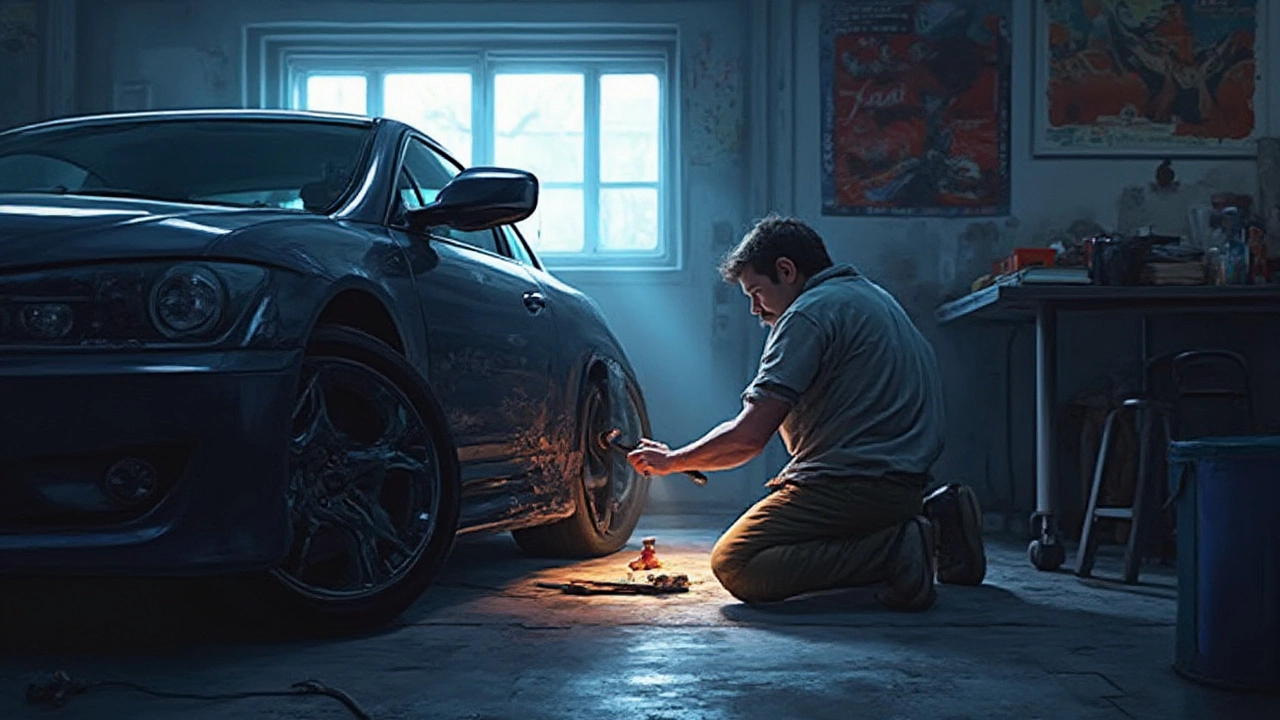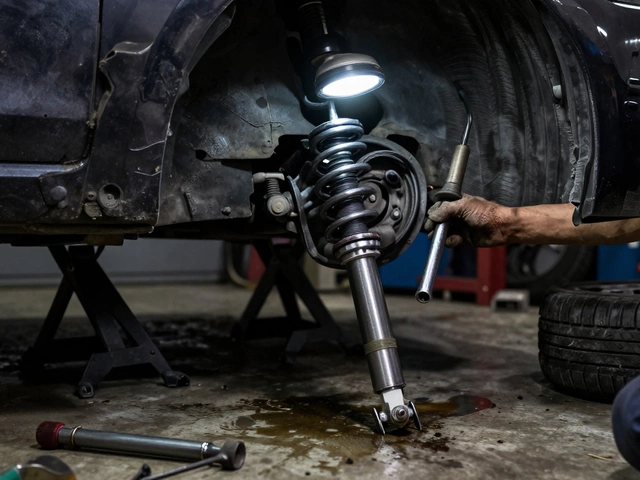Suspension Damage: Spot the Signs, Know the Risks, and Get Fixes Fast
Ever feel a wobble in the steering or hear clunks every time you hit a bump? That’s usually a warning that your suspension is hurting. Ignoring it can turn a simple fix into a pricey repair, and it makes every drive feel less comfortable.
Common Signs of Suspension Damage
First up, look for uneven tire wear. If the inside or outside edge of your tyre is wearing faster, the suspension isn’t keeping the wheel where it should be. Next, listen for noisy noises – a rattling, squeaking, or thumping sound when you go over potholes often means a worn shock absorber or broken spring.
Another red flag is a sagging ride height. When one corner of the car sits lower than the rest, a spring or coil might be broken. You’ll also notice the car leans excessively during cornering; that’s the suspension struggling to keep the body level.
Finally, pay attention to handling. If the car feels loose, drifts, or takes longer to stop, the suspension isn’t providing the grip it should. All these clues point to damage that needs attention before it gets worse.
What to Do When You Notice Problems
Don’t wait for a full breakdown. Book a check‑up at a reputable garage – like Northwich Tyres Centre – as soon as you spot any of the signs above. A quick visual inspection can reveal broken springs, leaking shocks, or worn bushings.
If the mechanic finds a bad shock absorber, they’ll usually replace it in pairs (left and right) to keep the car balanced. Replacing a broken spring is another common fix, and it often includes a fresh mount to avoid future wear.
While you’re there, ask for an alignment. Bad suspension can throw your wheels out of alignment, leading to more tyre wear and poorer handling. An alignment costs a bit, but it saves you money on tyres and keeps the car safe.
Fixes aren’t always expensive. A single shock absorber can run between £80‑£150 plus labour, and a spring replacement is similar. If the whole suspension needs overhauling, the price rises, but catching the issue early can cut that cost dramatically.
Driving with damaged suspension isn’t just uncomfortable – it’s risky. The car may not respond correctly in emergencies, and the extra strain can damage other components like steering or wheel bearings. In the worst case, a broken spring can collapse, causing loss of control.
Keep an eye on your ride, especially after hitting big potholes or driving on rough roads. A quick visual check of the car’s height and a short test drive can reveal problems before they get serious.
For more in‑depth info, check out our article “Can You Drive With Bad Suspension? Risks, Signs, and What Happens Next.” It breaks down the dangers and gives you a checklist to use on the road.
Bottom line: suspension damage shows up as noises, uneven tyre wear, sagging, and poor handling. Spot it early, get a professional inspection, and fix the parts that need it. Your car will feel smoother, safer, and you’ll avoid a costly repair bill down the line.
 4 August 2025
4 August 2025
Can You Drive With a Bent Suspension? Dangers, Signs, and Real Fixes
Wondering if it's safe to drive with a bent suspension? Learn the dangers, warning signs, and practical tips on what to do if your car’s suspension gets damaged.
 26 July 2025
26 July 2025
Can Suspension Damage Be Repaired? A Straightforward Guide to Fixing Your Car’s Suspension
Wondering if you can fix suspension damage? Get the lowdown on repairs, costs, symptoms, and when to call a pro. Stay safe and keep your car steady.
 28 January 2025
28 January 2025
Signs of a Damaged Suspension: How to Identify Issues Early
Recognizing the signs of a damaged suspension can prevent costly repairs and ensure a smooth, safe driving experience. This article provides insights into the common indicators of suspension issues, such as unusual noises, uneven tire wear, and a bumpy ride. Understand the importance of routine maintenance and timely inspections to keep your vehicle's suspension in top condition. Learn tips for early detection and how to address minor problems before they become major headaches. Maintaining healthy suspension not only enhances performance but also extends the lifespan of your car.






0